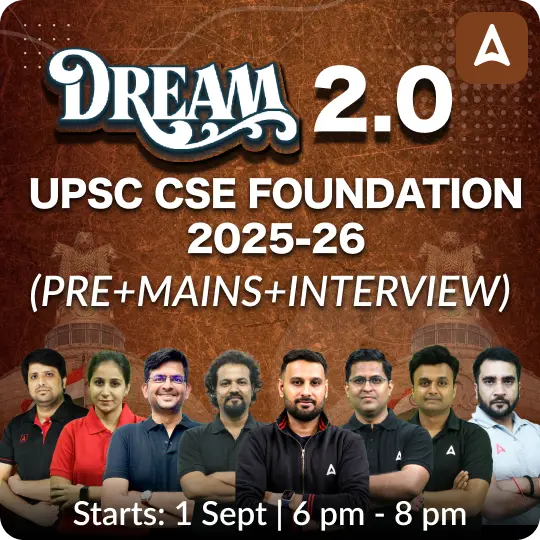Table of Contents
2 October, is Celebrated as Gandhi Jayanti to honor the memory and legacy of Mahatma Gandhi, one of the most prominent figures in India’s struggle for independence from British colonial rule. Mahatma Gandhi played a pivotal role in India’s fight for independence in a nonviolent way. Overall, 2 October, Gandhi Jayanti is a day of reflection, remembrance, and reverence for a man whose leadership and principles were instrumental in India’s struggle for independence and who continues to inspire movements for peace and justice worldwide. It serves as a reminder of the enduring relevance of Gandhi’s philosophy and values in today’s world.
2 October 2024
2 October 2024: Every year on October 2nd, the nation commemorates the birth anniversary of Mahatma Gandhi. As a tribute and to remember his principles and philosophies, 2nd October is marked as a National Holiday every year and all educational institutions/banks are also closed on this day. 2nd October is a kind reminder of Gandhi Ji’s power of love, tolerance, and resistance. In his honor, the day is celebrated with pomp and show across the country in banks, schools, colleges, and social, political, public, and private organizations.
2 October 2024 International Day of Non-Violence
October 2nd is also celebrated as the International Day of Non-Violence by the United Nations. Gandhi Ji’s teachings of non-violence and political/social justice have inspired people around the world marking in June 2007 this day as the International Day of Non-Violence.
October 2 Special Day in India
October 2 is celebrated as a special day in the history of India and this special day is celebrated as Gandhi Jayanti and Lal Bahadur Shastri Jayanti.
155th Gandhi Jayanti Celebration
This year 2 October 2024 (Wednesday) marks the 155th Gandhi Jayanti on his birth anniversary. Commemorative events like prayer gatherings, school and college events, devotional songs on radio and television, award presentations, and rallies are likely to take place.
155th Gandhi Jayanti Theme 2024
The Theme of 155th Gandhi Jayanti 2024 is Swachhata Hi Seva 2024: ‘Swabhav Swachhata, Sanskaar Swachhata’. Every year Gandhi Jayanthi is celebrated on 2nd October.
PM Modi on 155th Gandhi Jayanti, 2 October 2024
On the occasion of the 155th Gandhi Jayanti, Prime Minister Shri Narendra Modi will mark the completion of ten years since the launch of the Swachh Bharat Mission—one of India’s most significant mass movements for cleanliness. He will participate in the Swachh Bharat Diwas 2024 program on October 2 at around 10 AM at Vigyan Bhawan, New Delhi.
During the event, the Prime Minister will inaugurate and lay the foundation stone for several sanitation and cleanliness projects valued at over ₹9,600 crore. This includes more than ₹6,800 crore dedicated to enhancing urban water supply and sewage systems through AMRUT and AMRUT 2.0. Additionally, ten projects worth over ₹1,550 crore will focus on improving water quality and waste management in the Ganga basin as part of the National Mission for Clean Ganga. The launch will also feature 15 Compressed Biogas (CBG) plant projects valued at over ₹1,332 crore under the GOBARdhan Scheme.
The Swachh Bharat Diwas program will highlight India’s achievements in sanitation over the past decade and the successes of the recently concluded Swachhata Hi Seva campaign. It aims to set the foundation for the next phase of this national initiative, fostering widespread participation from local government bodies, women’s groups, youth organizations, and community leaders to ensure that the spirit of Sampoorna Swachhata (Total Cleanliness) reaches every part of the country.
The theme for Swachhata Hi Seva 2024, ‘Swabhav Swachhata, Sanskaar Swachhata’, symbolizes a renewed commitment to cleanliness, public health, and environmental sustainability. Under this initiative, over 19.70 lakh programs have been executed, engaging more than 17 crore participants. Approximately 6.5 lakh cleanliness target units have been transformed, and nearly 1 lakh Safai Mitra Suraksha Shivirs have been organized, benefiting over 30 lakh Safai Mitras. Furthermore, more than 45 lakh trees have been planted as part of the Ek Ped Maa ke Naam campaign.
Rituals of Gandhi Jayanti
On 2nd October, a prayer meeting at Raj Ghat, Gandhi’s memorial in New Delhi is held in the morning. Dignitaries like the President and Prime Minister of India are present during the prayer at the memorial. All the followers, political leaders, activists, and people pay their respects by laying flowers or garlands on his samadhi. The devotional song ‘Raghupati Raghava Raja Ram’ is sung/played in his memory.
Iconically, a moment of silence at 11 a.m. is observed across public places in his honor and Non-violent marches or padayatras have been prominent tasks on Gandhi Jayanti highlighting and promoting his principles of justice, love, unity, and non-violence.
Gandhian ideals are also showcased by service activities like set-ups of blood donation camps, tree plantation drives, and free health check-ups.
In schools, colleges, and different organizations throughout the nation every year Gandhi Jayanti is celebrated. Different themes, decorations, prayer and poetry meets and various creative activities take place on this special day. These celebrations revive the learnings and teachings of Mahatma Gandhi in the present generation. Also, everyone gets a chance to present new imaginative and creative ideas every year.
National Holiday on 2 October 2024
To honor the great leader and his principles and as a tribute and to remember his principles and philosophies, 2nd October is marked as a National Holiday every year and all government offices, educational institutions, and banks are also closed on this day.
Gandhi Jayanti’s 2024 Significance in the History of India
Champaran Satyagraha (1917): Mahatma Gandhi’s first major movement in India, the Champaran Satyagraha, took place in the Champaran district of Bihar. It was a farmers’ protest against the oppressive system under British rule, where farmers were forced to grow indigo on their land with little to no compensation. Through Gandhi’s nonviolent satyagraha, the British government agreed to abolish the exploitative Tinkathia system, and the farmers received a portion of their dues as compensation.
Kheda Satyagraha (1918): The Kheda Satyagraha was organized in Gujarat’s Kheda district, where farmers were suffering from famine and plague but were still required to pay taxes. Under the leadership of Sardar Vallabhbhai Patel and the guidance of Mahatma Gandhi, the movement pressured the British government to suspend tax collection for the current and subsequent year, providing relief to the struggling farmers.
Khilafat Movement (1919): A significant pan-Islamist protest, the Khilafat Movement, aimed to restore the caliph of the Ottoman Empire after its defeat in World War I. It was initiated by leaders like Shaukat Ali and Maulana Mohammad Ali Jauhar. In 1920, Mahatma Gandhi allied with the Khilafat leaders, merging the movement with the larger struggle for Swaraj (self-rule), bringing together Hindus and Muslims against British colonialism.
Non-Cooperation Movement (1920): Sparked by the Jallianwala Bagh Massacre, Mahatma Gandhi launched the Non-Cooperation Movement to reject British authority and their exploitation of India. The movement encouraged boycotting British goods, schools, and institutions. However, Gandhi called off the movement after violence erupted, leading to the death of 23 police officials.
Dandi March (1930): Also known as the Salt March, this was one of Gandhi’s most iconic acts of civil disobedience. In protest against the heavy tax imposed by the British on salt, Gandhi and his followers marched 240 miles to the coastal village of Dandi, where they symbolically made their own salt. The movement galvanized millions of Indians, many of whom were arrested, including Gandhi himself. Despite his imprisonment, the Satyagraha continued.
Quit India Movement (1942): Launched on August 8, 1942, the Quit India Movement, also known as the August Kranti, called for an immediate end to British rule in India. Gandhi’s famous slogan, “Do or Die,” became the rallying cry of this mass protest. However, after Congress leaders, including Gandhi, were arrested, the movement lacked direction and leadership but still intensified India’s struggle for independence.
155th Gandhi Jayanti UPSC
This year 155th Gandhi Jayanti will be celebrated with the new initiative of the PM by walking on the same path as of Gandhi Ji’s teachings and principles. The national holiday will be celebrated by performing a combined gesture under the Swatch Bharat Campaign. The intention of the government is to unite the people of the nation and preach non-violence and peace.
Also Read:
- Biography of Mahatma Gandhi
- Gandhian Ideology, Principals, Thoughts and Philosophy
- Swadeshi Movement History, Leaders, and Timeline
- Quit India Movement (8 August 1942), Impact, Causes & Outcomes
- When, Where, And Why Did The Khalistan Movement Start?
- Dandi March | National Salt Satyagraha
- Freedom Fighters of India List 1857-1947, Names and Contribution
- Scope of Freedom of Speech and Expression
- Champaran Satyagraha
- Lal Bahadur Shastri Jayanti Celebration



 TSPSC Group 1 Question Paper 2024, Downl...
TSPSC Group 1 Question Paper 2024, Downl...
 TSPSC Group 1 Answer key 2024 Out, Downl...
TSPSC Group 1 Answer key 2024 Out, Downl...
 UPSC Prelims 2024 Question Paper, Downlo...
UPSC Prelims 2024 Question Paper, Downlo...







